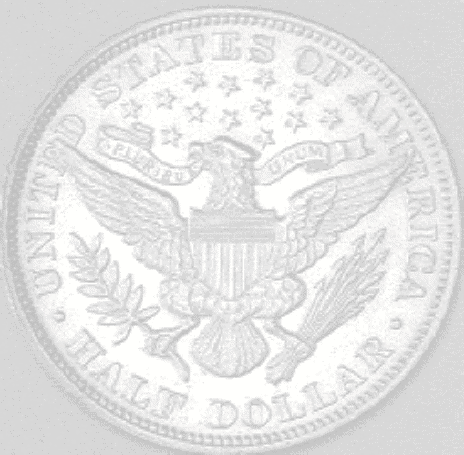
|
|
||
|
|
|
|
|
|
||

-15-
FOR BETTER OR WORSE:
War Mentality
Anything that is
circulated as "money" that is without intrinsic value is without value.
Such an economy is grounded upon the confidence of people, and therefore
it cannot be stabilized. Such an economy is subject to the affairs of
men. Consequently, confidence in the Union's currency fluctuated
according to military struggles, because paper "money" is not only the
currency of an oppressive economy, but as well the "money" of a war
economy.
At the beginning of the War, 67.45 "dollars" in gold
could buy what could be exchanged for 100 "dollars" in paper "money."
When General Ulysses S. Grant won the Battle of Vicksburg, 75.47
"dollars" in gold could buy what merchants demanded 100 "dollars" for an
exchange. In July 1864, when it appeared as though the Confederacy would
win the War, 100 "dollars” in currency was demanded for that which 35.08
"dollars" in gold could buy.
Then the Union began to win battle after battle, and
68.49 "dollars" in gold could purchase what demanded 100 "dollars" in
paper. But on April 14, 1865, the news of the assassination of President
Abraham Lincoln sent people's confidence in the currency plunging, and
what demanded 100 "dollars" in currency could be purchased for 60.61
"dollars" in gold (Reinfeld, 34). Paper "money" cannot depreciate when
it is intrinsically just a piece of paper.
"In God We Trust"
It is a bit ironic that in the midst of this economic maelstrom the motto "In God We Trust" was born. On November 30, 1861, Secretary Chase wrote Mr. Pollock, Director of the Philadelphia mint, to submit a design for a coin to include a motto "expressing in fewest and tersest words (the) trust of our people in God." "No nation can be strong except in the strength of God; or safe except in His defense." Accordingly, in 1864, the 2-cent coin appeared bearing the now familiar motto. If Mr. Chase had indeed trusted God by continuing a "just weight and measure" as the foundation of this country's banking practices, what heartache and hardship would have been spared the American people!
Gold Certificates
The Act of March 3,
1863 authorized the Secretary of the Treasury to accept deposits of gold
coin and bullion and to issue gold certificates "representing coin in
the Treasury” (“Coins and Currency of the United States”, 17). The gold
deposits were to be retained in the Treasury until such time as the
redemption of the certificates, which were receivable for duties on
imports, should be demanded. It is very significant that the gold
certificates after first appearing in circulation on November 13, 1865
were conveniently discontinued on December 1, 1878—just prior to the
resumption of specie payments in1879.
